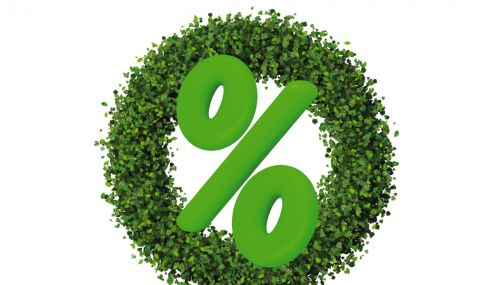All
Lower Carbon Lineup Puts Businesses on the Path to Net Zero Goals

As carriers, shippers, brokers, and heating oil businesses take a serious look at achieving net zero carbon emissions, lower carbon fuels such as biodiesel, renewable diesel, renewable and/or compressed natural gas and hydrogen can offer a progressive pathway.
Adopting these lower carbon intensity fuels not only helps align with environmental regulations; it can be a strategic move, which may work to outshine the competition and potentially improve the bottom line.
In the private sector, 58 percent of Fortune 500® companies have established targets to reach net zero by 2050 — which is a significant increase in recent years. Furthermore, of those businesses, roughly half of them already have plans in place to reduce Scope 3 emissions in their supply chain. The public sector is trending similarly, with at least 32 states releasing climate action plans.
Chevron has long been a leader in the lower carbon fuel solutions industry, providing solutions to meet customers wherever they are on their journey to reach net zero goals.
Lower Carbon Initiatives by Segment
Heating Oil
In 2019, the heating oil industry created the Providence Resolution to reduce GHG emissions. A 2024 analysis by the National Oilheat Research Alliance revealed the industry has surpassed its goal of reducing 15 percent of GHGs by 2023, achieving a nearly 26 percent reduction in greenhouse gas emissions through a combination of energy efficiency improvements and increased use of renewable fuels. Up next is a 40 percent reduction by 2030 and net zero carbon emissions by 2050.
Trucking
The trucking industry has many fleets advancing along their lower carbon journey. J.B. Hunt recently set a goal of reducing its own carbon emissions intensity by 32 percent by the year 2034, as compared to a 2019 baseline. A big part of helping them achieve that is a shift toward more bio-based fuels, including renewable diesel and biodiesel.
Marine
Each of the 10 largest shipping companies by market capitalization globally have expressed goals to reach net zero or have aligned with the International Maritime Organization’s (IMO) goals of 50 percent absolute reduction by 2050.
Rail
In the rail industry, the Federal Railroad Administration is currently calling for railroad operators and manufacturers to join its commitment to reach net zero by 2050. Both Union Pacific and CN are currently working with Chevron to demonstrate the value that biodiesel is contributing toward reaching their targets.
When exploring your lower carbon fuel options, some of the key elements to consider are scale, speed, and solutions.
- Scale: How well is your organization’s infrastructure able to handle the use of these fuel solutions? Factors such as tank storage, blender systems, location, and logistics should all be considered.
- Speed: Depending on where your operation is located, the speed of adoption may vary. For example, in areas where federal and state incentives exist, there may be a more established infrastructure in place. This can help facilitate the use of lower carbon fuel solutions .
- Solutions: Many solutions are required to help enable companies to reach net zero by 2050. With an increasing number of options available, the lower carbon fuels industry now provides greater flexibility to find the right solution for a variety of situations.
Let us look at the lower carbon fuel solutions from Chevron.
Biodiesel
Biodiesel is made from a variety of plant- and animal-based resources that receive their energy from the sun instead of fossil fuels. Other available feedstocks also include byproducts and waste products from different industries. These lower carbon feedstocks help biodiesel emit less greenhouse gas than traditional fuels.
Biodiesel is a direct replacement fuel that can be used in most existing diesel vehicles and fueling infrastructure, giving fleets a solution for lowering lifecycle carbon emissions quickly.
Additionally, biodiesel lowers particulate matter by 47 percent, reduces hydrocarbon emissions by up to 67 percent, and has been shown to improve the air quality, thanks to its considerable GHG emissions benefits.
Renewable diesel
Renewable diesel is made from the same feedstocks as biodiesel but uses a different production process. It is more like petroleum diesel and meets the same ASTM D975 specification.
Renewable diesel is becoming a popular choice, as it can effectively reduce carbon emissions and deliver strong performance, and has up to 85 percent less sulfur than ultra-low sulfur diesel (ULSD).
Renewable Natural Gas (RNG)
RNG is produced through anaerobic digestion of manure, food, municipal, and solid waste; and is sourced from dairy farms, waste treatment facilities and landfills. What would normally decompose, producing methane emissions that are 30 times more potent than CO2, is instead processed into a carbon negative fuel and delivered to vehicles at RNG/CNG fueling stations.
Compressed Natural Gas (CNG)
CNG is natural gas (methane) that is stored and transported under high pressure in its gaseous state. When compared to conventional diesel, CNG has many advantages:
- Lower carbon intensity based on reduced emissions across its production life cycle;
- Lower engine emissions of NOx and particulate matter.
Hydrogen
Fleets are seeking to lower their carbon intensity, and hydrogen fuel can help attract new customers in light- and heavy-duty fleet sectors. Hydrogen is a lower carbon intensity fuel that may also help your value in the commercial sector.
If your business is ready to start the journey to net zero through lower carbon fuel solutions, visit the Chevron website at chevron.com and submit a contact form, or contact Jason Lawrence, Senior Business Development Executive, at (717) 989-1313 or jason.lawrence@chevron.com.
Related Posts
 How to Set Your Business Apart with Renewable Propane
How to Set Your Business Apart with Renewable Propane
Posted on October 16, 2025
 EIA Report: Biodiesel and Renewable Diesel Imports Fall Sharply
EIA Report: Biodiesel and Renewable Diesel Imports Fall Sharply
Posted on October 16, 2025
 Northeast Liquid Fuel Providers Put Higher Bioblends in Focus
Northeast Liquid Fuel Providers Put Higher Bioblends in Focus
Posted on August 19, 2025
 Lower Carbon Lineup Puts Businesses on the Path to Net Zero Goals
Lower Carbon Lineup Puts Businesses on the Path to Net Zero Goals
Posted on August 18, 2025
Enter your email to receive important news and article updates.
